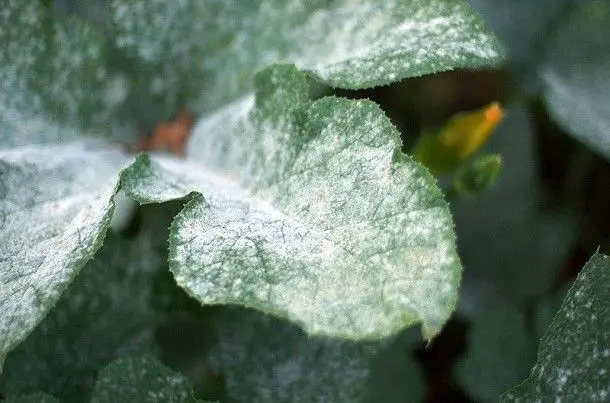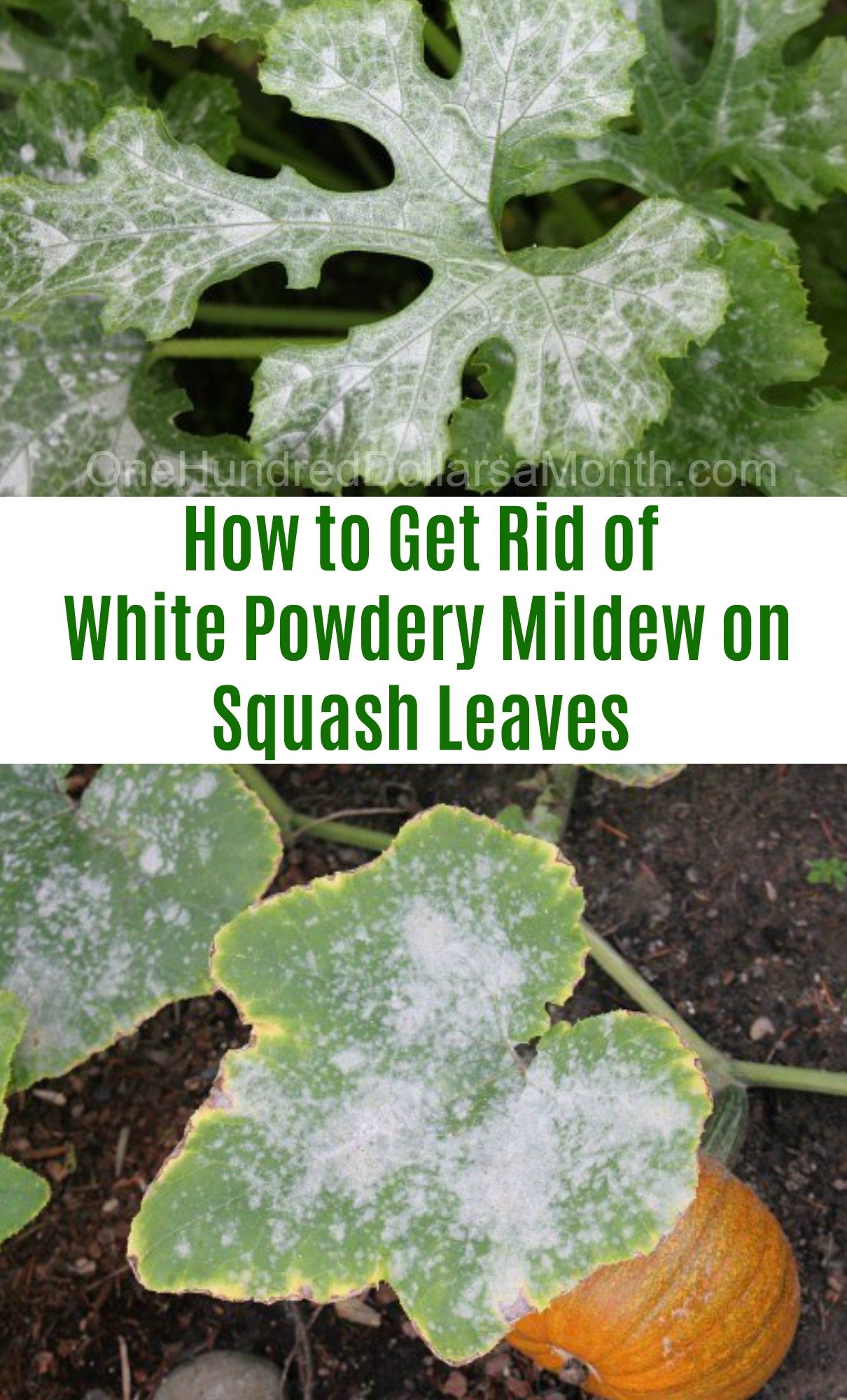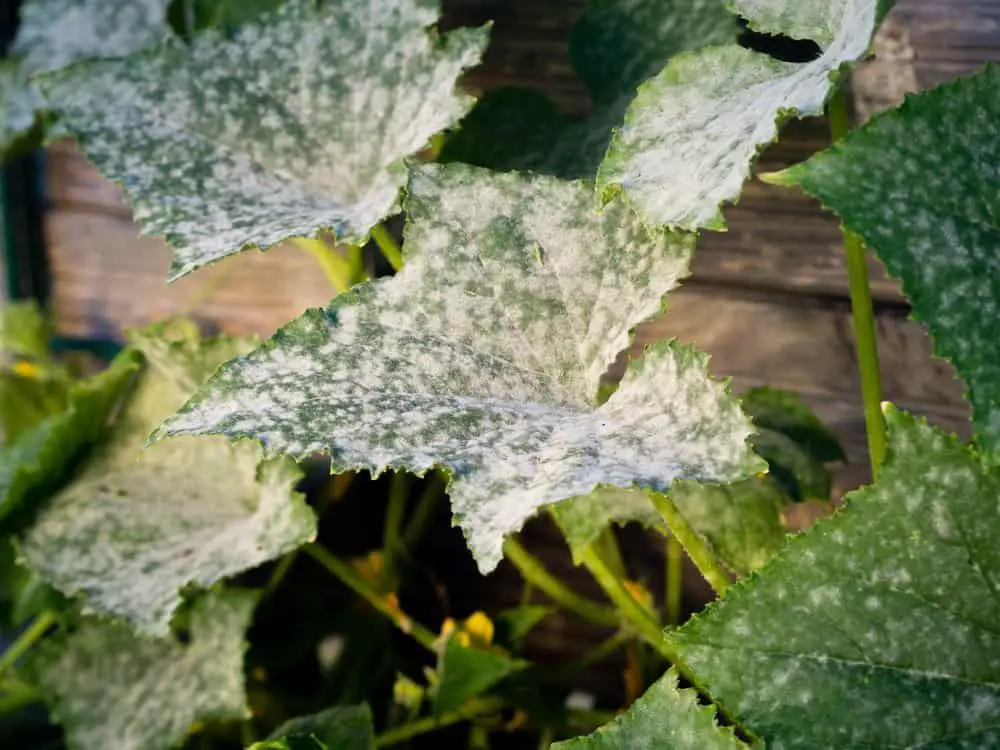Use Baking Soda As A Mold Prevention Treatment
The best way to use the baking soda spray for white mold problems is as a preventative treatment. Some houseplants are more susceptible to white fuzz than others. So, if you know you may have problems, use the spray early in the season.
To use the baking soda mold treatment recipe above, spray your plants every 2 weeks when indoor conditions are warm and humid.
Here are some top care tips when using baking soda sprays on plant fungus:
- Thoroughly water the potting soil two days before applying the baking soda mold spray.
- Dont put the plant in the sun when the anti-mold spray is drying.
- Always make a fresh batch of baking soda spray before using it.
What Else Can You Do
- Never let pots sit in saucers full of water for more than five minutes. Drain off excess moisture.
- Place plants in sunlight or strong artificial light to help them dry.
- If you see any mold, take the plant outside for a day to expose it to natural light and air. When you bring it back in, choose a new home for the plant in a spot that is slightly more sunny and breezy.
- You might also consider transplanting to a larger pot full of fresh dirt. Make sure you choose a pot with plenty of drainage holes.
Why Does White Mold Appear On Plants
White fuzzy mold on plants develops when naturally-occurring fungal spores germinate and grow. The white fungal growthalso called myceliumappears in warm, damp conditions, especially plants that grow in poor light. Overwatering houseplants and keeping them in the shade can cause white mold to appear.
Recommended Reading: Mold Growing On Bathroom Ceiling
Is It Safe To Use A Bag Of Old Moldy Potting Soil
Sometimes, you may not use all the potting soil at once later, when you go to use some more, you discover that fuzzy white stuff has bloomed inside the bag. It might also be that you buy a new bag of potting soil, bring it home, and discover the same thing. The question is, can you still use that soil?
- If you are transplanting, planting, or just replenishing dirt levels, the answer is yes. Before you use it, simply mix up the contents of the bag and work the white stuff back in with the dark. You might also add a little fresh compost. Cut the bag open and leave it outside, exposed to the sun and air, for a day or two, turning occasionally. You could also mix in some fresh compost.
- On the other hand, if you’re planning to sow seeds, you should not use that soil. Since the mold will compete with the seedlings for nutrients, it’s best to give the new plants a fighting chance in some fresh dirt.
Apple Cider Vinegar To Treat White Plant Mold

White mildew on the leaf of the English oak
Apple cider vinegar is another household item that has antifungal properties. Using a mixture of ACV and water may be enough to get rid of white fuzz from plant leaves. All you need is to make a diluted solution to help tackle your plant mold problem.
Many studies have been carried out into the effectiveness of vinegar as an antifungal agent. The main compound in vinegar is acetic acid. Although no studies have been carried out on its effectiveness on plant mold, you can try this method to remove white cottony growth on plants.
Read Also: What Cause Mold On Ceiling
What Is Tomato Leaf Mold
Leaf mold of tomato is caused by pathogen Passalora fulva. It is found throughout the world, predominantly on tomatoes grown where the relative humidity is high, particularly in plastic greenhouses. Occasionally, if conditions are just right, leaf mold of tomato can be a problem on field grown fruit.
Symptoms start as pale green to yellowish spots on upper leaf surfaces that turn a bright yellow. The spots merge as the disease progresses and the foliage then dies. Infected leaves curl, wither, and often drop from the plant.
Flowers, stems, and fruit may be infected, although usually only leaf tissue is affected. When the disease does manifest on the fruit, tomatoes with leaf mold become dark in color, leathery, and rot at the stem end.
Remove Debris From Houseplant Soil
Mold often grows when the surface of the soil remains damp for an extended period of time. When dead leaves and twigs fall from your plant, they typically lie on the surface of the potting soil and keep the soil beneath it damp.
This is a prime growing environment for white mold. To minimize this possibility, cut dead leaves off the plant and trim stems regularly too. If any do fall from your plant, make sure that you remove and discard them quickly.
Read Also: How To Clean Mold Around Air Vents
Solutions To Get Rid Of Tomato Hornworm Caterpillars
Bt is only toxic against the larvae of butterflies or moths. Claire emiliana how to get rid of bugs on plants naturally.
9 natural ways to get rid of aphids with images get. 11 natural ways to get rid of grubs in garden.
Earwigs how to get rid of pincher bugs using natural pest. 15 natural ways to get rid of squash bugs.
Get rid of aphids naturally with these 9 easy solutions. And every year, i was recruited to help plant, maintain, and eventually harvest the vegetables from it.
Get rid of stink bugs naturally. Be sure to pin or bookmark this article for future reference.
Get rid of tomato horn worms garden pests organic. Bt is only toxic against the larvae of butterflies or moths.
How to get rid of bed bugs naturally. Claire emiliana how to get rid of bugs on plants naturally.
How to get rid of squash bugs squash bugs garden pests. Combine 1 tablespoon 15 ml of soap with 1 gallon 3 8 l of water in a spray bottle.
How to get rid of tomato hornworms naturally hanging. Combine liquid dish soap and water and spray the plants and worms until covered.
How to get rid of tomato hornworms naturally in 2020. Drape the wet towel over an empty planter, tree branch, or garden fence so that it hangs vertically near the infested tomato.
How to get rid of tomato hornworms naturally in 2020. Drop the bugs into the soapy water.
How to keep insects and animals out of your garden. Fill an old coffee can with water and dish soap.
Increase Ventilation To Prevent Mold Growth
Mold does not like good air circulation very much and will certainly find a darker and damper place to go, if your houseplants are in a well ventilated room.
Note that a well ventilated room is not a drafty room. Some houseplants do not like drafts and changes in temperature, which can happen in a drafty room therefore, this is not the type of air circulation you need. Position your plants in a room with good airflow or make use of a basic oscillating fan on a low/slow setting every few days.
Recommended Reading: Ceiling Mildew Removal
Symptoms Of Gray Mold In Tomato Plants
Gray mold, or Botrytis blight, affects not just tomatoes, but other vegetables such as:
Caused by the fungus Botrytis cinerea, these one-celled spores are borne on multiple branches which gives the fungus its name from the Greek botrys, meaning bunch of grapes.
Gray mold of tomatoes appears on seedlings and young plants and appears as a grayish-brown mold that covers stems or leaves. Blossoms and the blossom end of the fruit are covered in dark gray spores. The infection spreads from the blossoms or the fruit back toward the stem. The infected stem turns white and develops a canker that may girdle it which may result in wilting above the infected region.
Tomatoes infected with gray mold turn light brown to gray when they come into contact with other infected plant parts or develop white rings called ghost spots if they are infected directly by airborne spores. Fruit that is infected and stored becomes covered with a gray coating of spores and may also show white mycelium on the surface of the fruit.
What Is Early Blight
Early blight is a fungal disease caused by Alternaria solani. It can occur at any time during the growing season. High humidity and temperatures above 75°F cause it to spread rapidly.
The fungus overwinters in the soil, and spores can be spread by wind, water, insects, and even on your clothes or shoes.
If you catch an outbreak early enough, you may be able to save your crop. The tomatoes are still edible, particularly if the disease is mostly confined to the foliage.
You may have also heard of a disease known as late blight.
To avoid any potential confusion, I want to stress that early blight is not the same thing as late blight the devastating disease responsible for the Irish potato famine.
Late blight is caused by a fungus-like water mold, Phytophthora infestans.
If you think early blight is bad, late blight is much worse. It is generally fatal to both tomatoes and potatoes it can spread for miles, and it was largely responsible for the death of one million Irish people .
You can learn more about various types of blights affecting tomatoes here.
Don’t Miss: How To Clean Mold From Leather Jacket
How To Manage Sclerotinia Of Tomato
There are some techniques you can use to minimize infection of your plants.
Unfortunately, no resistant varieties of tomatoes are available currently, though genetic testing of resistance to this pathogen is underway.
When conditions are favorable, it is a good idea to inspect your plants periodically and remove and destroy any that show symptoms of this disease.
Given the wide host range of this pathogen, it is particularly important to double down on removing any weeds found in or near your garden.
Dry Out Your Potting Soil In Direct Sunlight To Eliminate Mold Spores

As damp soil is adream come true for mold, you need to ensure that your houseplants dont remaintoo wet, consistently. Drying out the soil is a good step in the rightdirection and for that you can use natural sunlight. Ultraviolet rays fromsun kills mold.
There are two ways todry out your potting soil using the sunlight. The first method is to simplymove your plant to a sunny spot outside so that the suns rays can do theirwork. Mold is not a fan of sunshine and because mold is usually found just onthe surface of the soil, it can work just fine in non-severe cases. You couldeven scoop off the top layer of soil where the mold is growing, and discard it,before placing the houseplant in the sun for a bit.
Another method is toremove the plant carefully from its container and then spread the soil out in avery sunny spot. This is a good idea if your houseplant is sensitive to directsun exposure. This allows for the sun to deal with the mold without burning ordrying out your houseplant.
While the soil isspread out in the sun, you can even spray it over with a mixture of water andbaking soda. Baking soda will help draw out and absorb the moisture from themold and will also help to keep it at bay in future.
You May Like: Uv Lights To Remove Mold
Rid Of Flies In A Potted Tomato Plant
Spray both sides of the potted tomato plant’s leaves with a blast of water. Attach a sprayer head to your garden hose and wash away the immature and adult whiteflies from the leaves. Repeat weekly, or if you notice a reinfestation. Avoid increasing the dish or insecticidal soap, as this can damage the plant. Eliminate any heavily infested, potted tomato plants from the greenhouse or your backyard. A plant that features yellowing leaves and mold is suffering from a serious infestation that will quickly spread.
Related Articles
What Can Be Done About Tomato Leaf Mold
Within the season
Limiting the relative humidity in the hoophouse can help to prevent this disease. Vent, if possible, to promote air movement. Increase plant spacing, remove weeds, and prune and trellis plants. Consider using drip irrigation to minimize leaf wetness. If watering overhead, irrigate in the morning so foliage can dry quickly.
There are organic preventive products available, which vary in price but performed similarly in Cornell University trials. Products trialed include Champ , Double Nickle , Oxidate , Regalia and Zonix . While the treatments did reduce the amount of tomato leaf mold, the disease level was still high. In this trial, all treatments performed comparably, but when price is brought into consideration, the copper product Champ gave the best value. Note, only certain copper hydroxide formulations are approved for organic use, including Champ WG and Kocide 3000-O, and formulations with a higher percentage of active ingredient increase the Re-Entry Interval to 48 hours. Copper products with a lower percentage of active ingredient will lower the REI, but do not work as well against this disease. For more information on product trials, see Managing Leaf Mold in High Tunnel Production.
Conventional fungicides available for treating this disease include mancozeb formulations, Revus Top and Tanos . See the table below for more information on rates and greenhouse use for the products from the Cornell study, and conventional fungicides
Long-term
Read Also: How To Clean Mold Off Shower Grout
What Are The Tiny Hairs On Tomato Plants
Have you ever wondered why tomato plants have so many little hairs on the stems and leaves? They are kind of neat to look at, but they actually serve a purpose too. The tiny hair-like structures are called trichomes, and they are there to help protect the plant from weather and herbivorous insect invasion.
Remove The Soil Affected By White Mold
If you detect a superficial layer of mold on the top soil of a plant pot, you can remove the affected areas. We can do this with a trowel, i.e. the little spade commonly used in gardening.
For some plants, it might be best to move the plant altogether. We detail how to do this in our article on repotting cacti.
Don’t Miss: How To Get Mold Off The Ceiling
How Can I Prevent New Mold From Growing
Getting the right combination of sun, air, soil and water will keep the natural balance of your soil in check. Start by watering only when necessary. Many houseplants come with care instructions, but Levi says not to adhere to them. Most plant tags that come with a plant provide care guidance for where the plant was grown, not necessarily your home/area, he says.
Instead of watering on a rigid schedule, stick a finger a few inches into the soil to check its moisture level. Hydrospikes are another option for forgetful plant owners.
Avoid pots without drainage holes. If you fall in love with a decorative pot that doesnt have holes, there are a few things you can try. One common solution is to add landscape rocks beneath the potting soil so that water has a place to pool. You can also try to drill holes into the pot, but clay or ceramic pieces may shatter. Be aware that these solutions are not guaranteed, so you may end up repotting your plant due to mold on its soil.
Finally, place your houseplant where it will get enough sunshine and air circulation. This means that tight spaces and forgotten corners might need fake plants. If an open window is out of the question, consider using a fan to mimic a natural breeze.
How To Use Baking Soda To Get Rid Of White Mold On Plants
In the picture: white powdery mildew on tomato plant
Baking soda is one of the most common home remedies used to eliminate plant mold. For the anti-mold spray to be effective, you should mix the sodium bicarbonate with some dish soap, such as Dawn, and water. However, you may find that the baking soda mixture is better to prevent white plant mold than cure it.
Recommended Reading: Cleaning Mold In Shower Grout
Natural Remedies For White Fuzzy Mold On Plants
Related Articles
White fuzzy mold, also known as powdery mildew, is caused by the airborne spores of fungus. The fungus spores generally attach to a young leaf where it is able to germinate and grow, quickly spreading to other parts of the plant and nearby plants. Both indoor and outdoor plants are susceptible to infection, especially in warm, humid areas. In most cases, the mold will not kill an established plant, but it can weaken the plant and reduce the output of vegetation, as well as spread to other plants. Increasing air circulation around plants can help prevent the spores from taking hold, while natural household products can kill the mold and help prevent it from spreading.
Plants That Are Most Susceptible To White Mold

White fungal infections can affect most plants however, there are some types of trees, shrubs, and flowers that are more susceptible to powdery mildew. Fungi from the order Erysiphales thrive in warm, humid conditions. So, very often, plants growing in temperate climates that have warm, humid summers are prone to white powder mold.
Indoor houseplants that are especially susceptible to mold include African violets, kalanchoe, begonias, indoor ivies, jade plants, and poinsettia.
Outdoor plants that are prone to white fungus infections include hydrangea, lilac, apple trees, oak trees, zinnia, roses, and strawberries.
Read Also: How To Remove Mold On Ceiling
